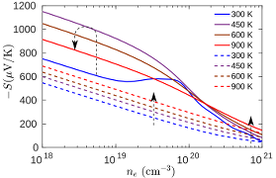Theoretical Prediction of Enhanced Thermopower in n-Doped Si/Ge Superlattices Using Effective Mass Approximation
Manoj Settipalli, and Sanghamitra Neogi, Journal of Elec. Materi., 49, 4431-4442 (2020)
Theoretical study of the charge transport properties of multilayered seminconductor heterostructures varied composition and strain environment, using analytical effective mass approximation
